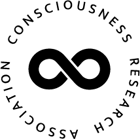
Phenomenology
Phenomenology and Unexplained Phenomena: Exploring Consciousness Beyond the Body
The holistic approach in psychology is based on the idea that a person is much more than their mind or body - it is a whole in which emotions, energy, consciousness and experiences coexist. This approach emphasises that the psyche cannot be separated from the body, and that our thoughts, emotions and beliefs affect our physical health, wellbeing and the way we perceive the world.
Through years of research, my own experiences and reflections, I have come to the conclusion that death is not an end, but a transition. Much of the research on near-death experiences (NDEs) and the work of psychologists working on the topic of death and dying show that what we perceive as the end of life is in fact just a transition.
From an energy perspective - since everything is a vibration, nothing really disappears, but changes form. Just as the electricity in a light bulb transforms into light, our existence can also transform into another form that we do not yet fully understand. People who have experienced clinical death often describe a feeling of immense peace, light, a connection to something greater - as if consciousness does not end when bodily functions stop.
Holistic psychology recognises this aspect of existence and does not reduce humans to their biological functions alone. More and more therapists and researchers are exploring the impact of spirituality on mental health, the grieving process and coping with loss. For centuries, many cultures have viewed death not as an end, but as a transition to another state of existence - and although we have no evidence of this in the classical scientific sense, people's experiences, intuition and numerous accounts indicate that reality may be much deeper than we can grasp with our minds.
For me, the most important conclusion of this exploration is that life is a process of constant transformation - both within and beyond one incarnation. How we live, what vibrations and intentions we nurture, matter not only in the here and now, but also in what comes next. And while death still remains a mystery, we don't need to fear it - because it is part of a larger cycle that we don't yet fully understand, but can experience on many levels.
Everything in our world is a vibration - from the smallest particles to large planetary systems. What we experience every day is the result of the subtle vibrations that create matter, sound, light and our own thoughts. Just as electricity powers our homes even though we cannot see it, we are also surrounded by various forms of energy that influence our moods, emotions and perception of reality.
This is not esotericism, but a scientific look at the mechanisms that govern the world. Quantum physics shows that elementary particles behave in ways that are difficult to explain with classical logic - they are both wave and matter, existing in a potential state before they are ‘observed’. This suggests that our reality is much more dynamic than we think.
Vibration permeates everything - from the sounds of music that can stir our emotions, to subtle changes in the atmosphere between people. Sometimes we enter a room and immediately ‘feel’ its atmosphere, even though no one has said anything. Our bodies respond to invisible frequencies - as with radio waves or Wi-Fi, which, although invisible, are real and affect our world.
To understand vibration is to be aware that our thoughts, words and intentions also emit certain frequencies. This is why it is so important what we surround ourselves with, how we think and what emotions we nurture. Harmony with the energy around us is not mysticism - it is the ability to tune into the rhythm of life in a conscious and attentive way.
Kristine Mkhitaryan, MA psychology, hypnotherapist
Consciousness Research Association
The Association for Consciousness Research
Contact
contact@conreas.com
© 2024. All rights reserved.
